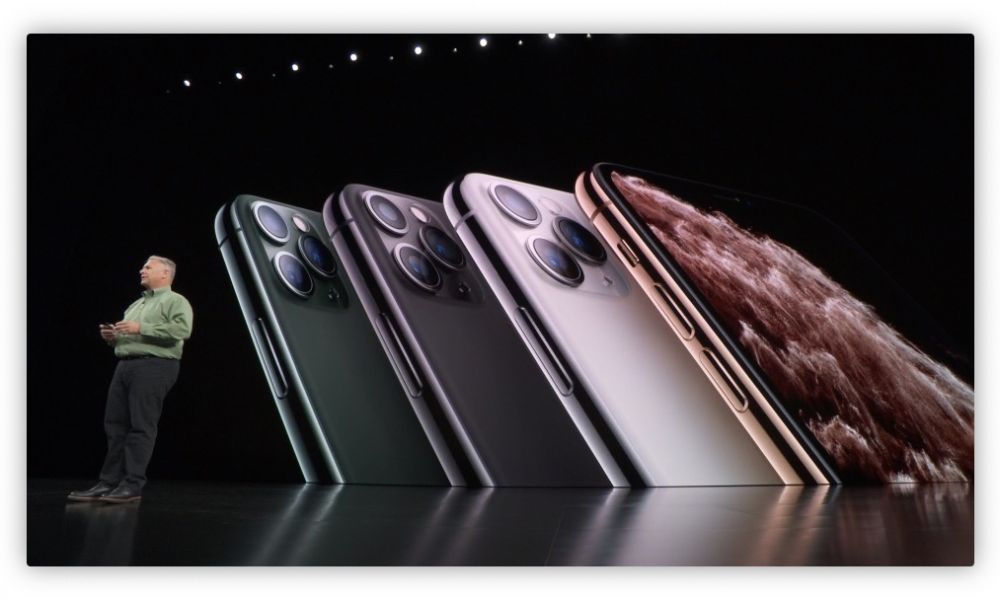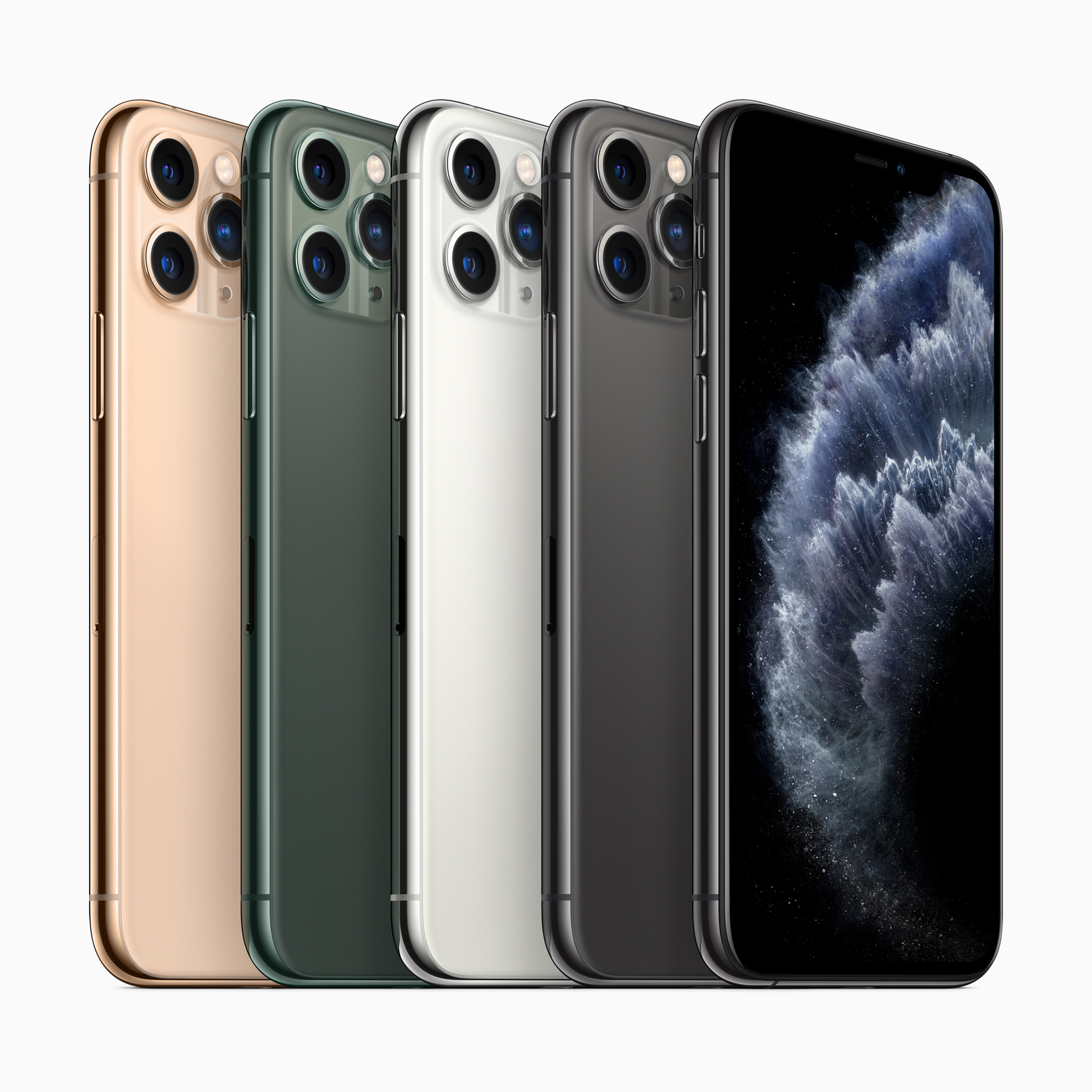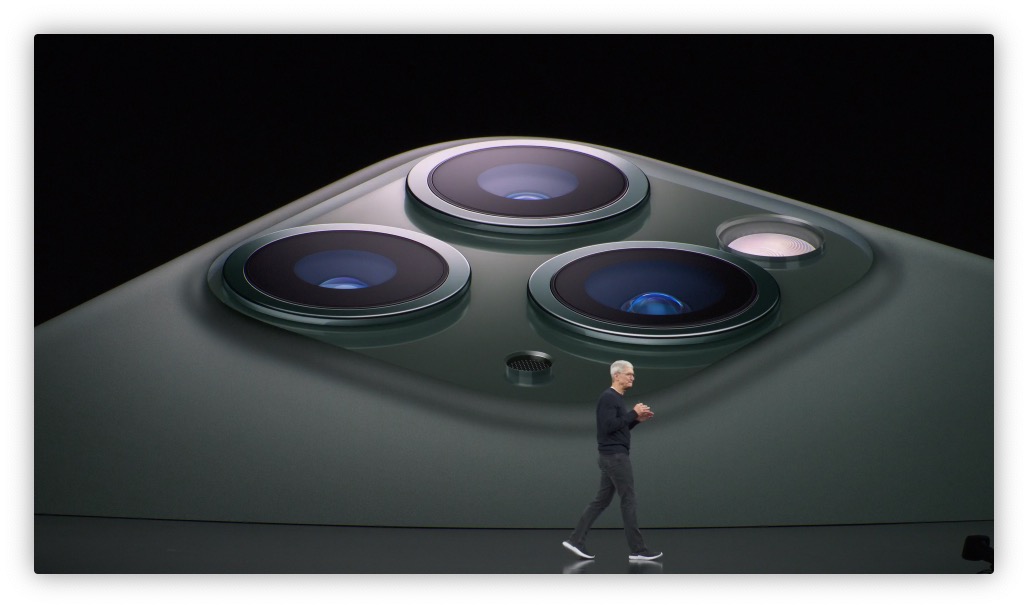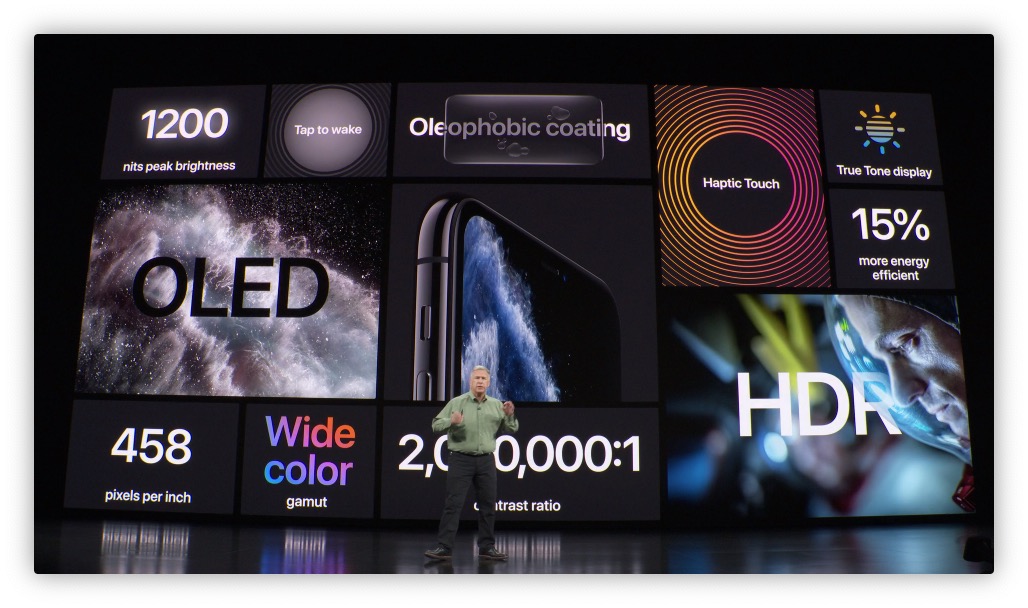iPhone 11 Pro Officially Announced with Triple-Lens Camera, Super Retina XDR Display and More

Toggle Dark Mode
Apple’s 2019 iPhone lineup saw a restructuring at this year’s event, with Apple making it clear that the iPhone 11 — the successor to last year’s iPhone XR — is now the standard model, and the company’s more premium iPhones that will be replacing the XS and XS Max are now the “Pro” models.
Dubbed the iPhone 11 Pro (and iPhone 11 Pro Max), Apple’s two new flagship iPhones include many of the new features we’ve been hearing rumours about over the past few months, including a new triple-lens camera system, night mode photography, an enhanced OLED display, and more. As the first iPhone to ever bear a “Pro” moniker, Apple acknowledged it’s an iPhone designed to meet the needs of professionals, but that it’s also still the best product Apple has ever made even if you’re not a pro.
Design
Apple of course touted the “stunning new design” of the iPhone 11 Pro, which features the same surgical-grade stainless steel as the XS series models, with a single piece of machined glass and a new matte textured finish. The screen sizes remain 5.8 inches for the iPhone 11 Pro and 6.5 inches for the iPhone 11 Pro Max (and yes, that’s a mouthful), so the overall dimensions of both devices are the same, but a new square camera bump means that it’s not going to fit cases for older iPhones.

While multi-coloured iPhones have generally been the exclusive domain of Apple’s more inexpensive iPhone models — the iPhone XR and the budget-friendly iPhone 5c before that — the higher-end iPhone 11 Pro now gains a new color option for the first time: the midnight green that we heard rumours about last month has made an appearance, alongside the traditional space gray, silver, and gold versions.
Triple-Lens Camera System
As pretty much every rumour over the past nine months has pointed to, the marquee feature of the iPhone 11 Pro is Apple’s move to a triple-lens camera system. The iPhone 11 Pro models feature the same wide and ultra-wide cameras found on the standard iPhone 11, adding a 12 megapixel telephoto shooter to the mix, which now features an f/2.0 lens with optical image stabilization.
It’s also worth mentioning that the iPhone 11 Pro doesn’t just add the telephoto lens onto the iPhone 11 design, but rather moves the ultra-wide lens to the third position, placing the telephoto directly below the standard wide-angle lens.

This means that between the three lenses — a standard wide 26mm f/1.8, an ultra-wide 13mm f/2.4, and the telephoto f/2.0 — the iPhone 11 Pro offers three optical zoom levels, 0.5x, 1x, and 2x, plus a number of other advanced image processing features that take full advantage of the three lenses.
Deep Fusion
In fact, Apple highlighted a new feature that will be coming to the iPhone 11 Pro “in a future software update” called Deep Fusion. This will use machine learning and the power of the A13 Bionic Neural Engine to create incredibly detailed and vivid photos by analyzing a combination of nine photos — captured before you even press the shutter button — and fusing them together pixel-by-pixel to optimize for detail and low noise.

Apple’s Phil Schiller describes the process as “computational photography mad science” and the whole process occurs in less than a second, providing photos that go beyond what the iPhone has been able to do before. It’s unclear whether this will be arriving as part of the iOS 13.1 update that’s just around the corner, or sometime after that.
Night Mode
Naturally, the iPhone 11 Pro will also be gaining the same Night Mode features as the iPhone 11, allowing pictures to automatically be captured at higher light levels in extremely low light conditions, without the need to turn on the flash. The Night Mode feature will employ “adaptive bracketing” to automatically capture multiple photos at different exposure levels and then fuse them together to capture the best balance of shadows and highlights.
Video
All three of the new cameras are capable of shooting at a maximum resolution of 4K/60fps, with extended dynamic range. Most significantly, however, Apple notes that it has paired and calibrated the three cameras to provide for a seamless transition between them when shooting video, so users will be able to take advantage of smooth shifting between different optical zoom levels without missing a beat.

Under the hood, this is accomplished by keeping the three cameras always in sync for auto focus, auto color, auto exposure, color mapping, and more, so that basically all three are always “active” regardless of which one is being used to actually capture the video.
While Apple didn’t mention it during the keynote, it also appears that the iPhone 11 Pro will be gaining the ability to automatically “zoom in” audio, narrowing the focus of the captured audio when recording videos to match the visual zoom level.
TrueDepth
The iPhone 11 Pro gains the same TrueDepth camera enhancements as the iPhone 11, meaning that you’ll be able to capture landscape selfies at 12 megapixels, although portrait selfies will still be limited to the same seven-megapixel resolution as prior models.
More significantly, however, the iPhone 11 Pro also gains the ability to record front-facing video at 4K, with a 30fps rate with extended dynamic range, and a 60fps rate for recording without.
Screen and Audio
Apple also pointed out that it’s made enough improvements on last year’s Super Retina display to now dub it the Super Retina XDR, and although the resolution and pixel densities remain unchanged, Apple has done some impressive work improving the brightness and contrast ratios.

Specifically, the iPhone 11 Pro models now offer a 2,000,000:1 contrast ratio, and can provide up to 1200 nits of brightness when viewing extended dynamic range content, such as HDR photos and HDR10 movies. It can also get up to 800 nits when out in the sun, so viewing it on a bright day should be even easier.
In terms of sound, the iPhone 11 Pro also gains spatial audio and Dolby Atmos support.
U1 Chip and Ultra Wideband
Although Apple didn’t make any specific mention of it during the keynote, it appears that the iPhone 11 Pro will also include a new Apple-designed U1 chip. It seems that this is what Apple will be calling the R1 chip reported yesterday, and it’s designed to work with new ultra wideband radios for more precise positioning of other “U1-equipped Apple devices” — no doubt laying the groundwork for Apple’s new Tile-like tags.
The new Apple?designed U1 chip uses Ultra Wideband technology for spatial awareness — allowing iPhone 11 Pro to precisely locate other U1?equipped Apple devices. It’s like adding another sense to iPhone, and it’s going to lead to amazing new capabilities.
While Apple promises that it will lead to “amazing new capabilities,” for now it seems it will be used primarily to help iPhone 11 users locate each other when sharing data using AirDrop; pointing your iPhone at another user’s iPhone when sending a file or image will prioritize that specific iPhone to the top of the AirDrop list.
Since new iPhone models aren’t getting an upgrade to Bluetooth 5.1, however, which would allow for directional positioning for non-UWB devices, it seems likely this feature will only work if both users have iPhone 11 devices.
Performance and Battery
All of Apple’s 2019 iPhone models feature the company’s new A13 Bionic processor, which Apple touts as the fastest chip ever in a smart phone. It’s not a specious claim either — last year’s A12 Bionic already ran circles around even desktop CPUs, so the A13 is going to extend Apple’s lead even further.

The A13 is up to 20 percent faster than last year’s A12, both in terms of the CPU, the GPU, and the Neural Engine, and it uses 20-30% less power. It also supports a new generation of machine learning processing that developers will be able to take advantage of to make their apps ever more intelligent.
All of these CPU/GPU improvements, combined with other optimization, means that Apple is promising that the iPhone 11 Pro will deliver four hours more battery life than the iPhone XS, while the iPhone 11 Pro Max will beat out last year’s XS Max by a whopping five hours.
Although Apple’s iPhones have supported fast charging since the iPhone 8 and iPhone X were released in 2017, Apple is also finally including an 18-watt fast charging adapter in the box for the first time. This will be exclusive to the iPhone 11 Pro models; the iPhone 11 will still support fast charging, but you’ll have to buy the adapter separately.
Models, Pricing, and Availability
The iPhone 11 Pro and iPhone 11 Pro Max will be available in the same 64 GB, 256 GB, and 512 GB capacities as last year’s iPhone XS models, with prices starting at $999 for the iPhone 11 Pro, and $1,099 for the iPhone 11 Pro Max, and topping out at $1,449 for the 512 GB iPhone 11 Pro Max.

Pre-orders for all of the new models will open this Friday — at 5 a.m. PT this year to avoid the midnight rush. The new iPhone 11 Pro models are expected to begin shipping and arrive in stores on September 20th.






